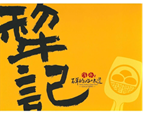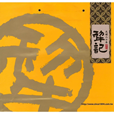
In this article, we selected ten representative trademark cases from the judgments of the Supreme Administrative Court and the Intellectual Property and Commercial Court (hereafter IP Court) in 2022. The selected cases contend with the interpretations of several provisions: Article 30, paragraph 1, subparagraphs 8, 10, and 11 of the Trademark Act, namely the acts of “misleading the public as to the place of origin of the goods”, “being identical with or similar to another person’s registered trademark”, “being identical with or similar to another person’s well-known trademark or mark” and leading to “a likelihood of dilution of the distinctiveness or reputation of the said well-known trademark or mark”; as well as controversies associated with the “distinctiveness” of a trademark prescribed by Article 18, paragraph 2, the limits of fair use in Article 36, and generic trademark in Article 63.
-
Dispute over Barista Coffee’s applications to register marks including “York Milk Tea” as likely to mislead consumers as to the place of origin of the goods
Case Summary: Marks “約克夏”, “即品約克夏”, “即品約克夏奶茶”, and “York Milk Tea”, designated for use on milk tea goods are likely to mislead the consumers as to the place of origin of the goods, therefore the registrations shall be voided.
In the 1970s, Bettys & Taylors Group (貝蒂與泰勒集團公司), a renowned tea and coffee enterprise based in the UK, launched the tea brand Yorkshire Tea, which has since then become one of the best-selling tea brands in the UK. The enterprise discovered that Full Fill Industrial Co., Ltd. (馥餘公司, hereafter Full Fill), the owner of the renowned brand Barista Coffee (西雅圖咖啡) in Taiwan, has applied for the registrations of marks including “約克夏”, “即品約克夏”, “即品約克夏奶茶”, and “York Milk Tea”, designated for use on goods including tea bag and milk tea. Bettys & Taylors Group filed an opposition on the grounds that said marks are likely to mislead consumers into believing that the goods originated from the geographical location of Yorkshire or York in the UK. After reviewing the case, the Taiwan Intellectual Property Office (hereafter TIPO) voided the registrations of said marks. Full Fill filed an administrative appeal, which was dismissed; subsequently the enterprise filed an administrative litigation against the TIPO.
In its judgment [1], the IP Court found Yorkshire and York to be British place names, which are widely known for their rich cultural heritages and natural landscapes. The opposed marks, designated for use on goods related to tea and coffee, are likely to mislead consumers into believing that the goods originated from Yorkshire or York. Furthermore, since Barista Coffee is a Taiwan enterprise, the tea leaves and other ingredients of the goods indicated by the opposed marks are not sourced from Yorkshire or York, UK, thus the opposed marks may lead to consumer misidentification of the origin of the goods. Article 30, paragraph 1, subparagraph 8 of the Trademark Act applies to the case, and the appeal filed by Full Fill is dismissed.
| Opposed marks |
  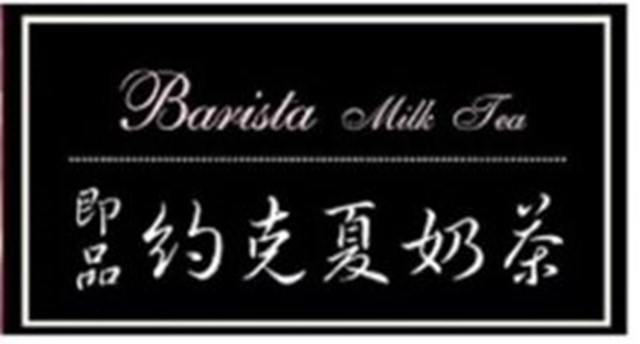  |
-
Dispute over the distinctiveness of marks “a2”, “ATWO”, and “a2 MILK”
Case Summary: Marks “a2”, “ATWO”, and “a2 MILK”, designated for use on milk-related goods, should be considered suggestive trademarks. Based on their inherent distinctiveness, registrations shall be approved.
The a2 Milk Company Limited, based in New Zealand, has registered marks “![]() ”, “
”, “![]() ”, and “
”, and “![]() ”. The marks are designated for use on milk-related goods, implying that the goods only contain A2β-casein and not A1β-casein, as the former is less likely to cause digestive discomfort.
”. The marks are designated for use on milk-related goods, implying that the goods only contain A2β-casein and not A1β-casein, as the former is less likely to cause digestive discomfort.
The well-known Taiwan dairy brand Better Together (鮮乳坊), owned by Pure Milk Co., Ltd. (慕渴公司), as well as the international manufacturer Nestlé have also launched milk-related goods that contain A2β-casein. These companies argue that “a2” and the other related marks are descriptive of the nature of the milk-related goods, rendering them non-distinctive. After reviewing the case, the TIPO voided the registrations of said marks. a2 Milk Company filed an administrative appeal, which was dismissed; subsequently the company filed an administrative litigation against the TIPO.
In its judgment [2], the IP Court found that “a2” and “ATWO” are not existing foreign words, they do not contain inherent meanings, and their definitions are not readily available in the dictionary. When the consumers encounter said marks, they might not immediately associate them with “milk containing A2β casein” or other descriptive connotations, as claimed by the opponents. Furthermore, the words “a2” and “A2β casein” are not entirely identical. Consumers will have to do their own research and use a certain degree of imagination or reasoning before they can understand the association between the two. Therefore, a2 Milk Company is indirectly hinting at the composition of the goods by means of implicit metaphor. As suggestive trademarks, they are inherently distinctive. There is no ground for refusal of the registrations under Article 29, paragraph 1 of the Trademark Act. a2 Milk Company’s claim is justified, and the original disposition is voided.
-
Dispute over “@cosme” diluting the distinctiveness of the “COSMED” trademark
Case Summary: “@cosme”, “@cosme store” and other marks are likely to dilute the distinctiveness of the well-known trademark “COSMED”. Registrations shall be voided.
Japanese enterprise istyle Inc. (艾世泰公司) has registered the marks “@cosme” and “@cosme store”, designated for use on services in Class 35 including “dissemination of advertising matter, data search in computer databases”. It is a well-known cosmetics and beauty information website in Japan. Uni-President Enterprises Corporation (統一企業股份有限公司), a well-known enterprise in Taiwan, filed an opposition on the grounds that said marks were likely to dilute the distinctiveness of its own trademark “COSMED” (康是美). After reviewing the case, the TIPO voided the registrations of said marks. Istyle Inc. filed an administrative appeal, which was dismissed; subsequently the enterprise filed an administrative litigation against the TIPO.
| Opposed marks | Trademarks owned by Uni-President Enterprises Corporation |
|
|
In its judgment [3], the IP Court found that “cosme” and “COSMED”, the most impressionable elements of the opposed and opposing marks, respectively, are similar in appearance and in pronunciation, with some minor differences being the capitalization and the additional “D” at the end of the latter mark. Furthermore, “COSMED” is reputable for its provision of cosmetics and skin care products, common household products, health and beauty consultation etc. It is commonly known and recognized by the general public and beyond relevant consumers. As a highly well-known trademark, “COSMED” should be granted greater protection. Citing Article 30, paragraph 1, subparagraph 11 of the Trademark Act, the court found that the “cosme” mark will likely dilute the distinctiveness of the “COSMED” mark, hence the administrative litigation filed by istyle Inc. is dismissed.
-
Dispute over APEX Group’s (中陽建設) infringement on the trademark rights of China Metal Products Co., LTD. (勤美集團, hereafter CMP Group)
Case Summary: On its marketing materials, Apex Group used words such as “公益勤美“ (literally “charitable, diligent and beautiful”, but the last two characters also combine to form the trademark of CMP Group) and “勤美綠園道” (literally “diligent and beautiful park lane”), which infringe on CMP Group’s trademark rights over the marks “勤美天地” and “勤美綠園道”.
CMP Group has registered trademarks including “![]() ” and “
” and “![]() ”, designated for use on services including “the sale and rental of real estate”. Apex Group, on its marketing materials on Facebook for its construction project Biao Can Dao (表參道), used words such as “公益勤美” and “勤美綠園道”. CMP Group filed a civil lawsuit with the claim that the uses were infringing on its trademark rights. APEX Group responded with the fair use defense.
”, designated for use on services including “the sale and rental of real estate”. Apex Group, on its marketing materials on Facebook for its construction project Biao Can Dao (表參道), used words such as “公益勤美” and “勤美綠園道”. CMP Group filed a civil lawsuit with the claim that the uses were infringing on its trademark rights. APEX Group responded with the fair use defense.
In its judgment [4], the IP Court found that APEX Group has extensively and repeatedly used “公益勤美”, partially similar to the plaintiff’s marks, and “勤美綠園道”, entirely identical with one of the plaintiff’s marks, for marketing purposes, and designating the defendant’s marks for use on the same services as the plaintiff’s marks, including “the sale and rental of real estate”. These words are the main visual elements on the marketing materials, while “APEX Group” is only denoted in small fonts in inconspicuous places. The consumers may mistakenly believe that Biao Can Dao is a construction project led by CMP Group, or that there exists an investment or collaborative relationship between the two companies. Since the uses are likely to cause confusion and misidentification to relevant consumers, they should be deemed as acts of infringement in accordance with Article 68, paragraph 1, subparagraphs 1 and 3 of the Trademark Act. Furthermore, Biao Can Dao is 1.1 kilometers away from Park Lane by CMP (勤美誠品綠園道), hence ordinary consumers are unlikely to consider it to be within the business circle of Park Lane by CMP. APEX Group cannot justify the claim that Biao Can Dao’s geographical proximity to Park Lane by CMP necessitates its references to “勤美綠園道”. Therefore, fair use defense prescribed by Article 36, paragraph 1, subparagraph 1 of the Trademark Act does not apply to the case, and CMP Group’s complaint is justified.
-
Dispute over Taida Education Institute’s (台大補習班) use of “台大”as part of its name and trademark
Case Summary: Taida Education Institute (now T. M. Education Institute) and Ming Ming Culture and Education Co., Ltd.’s use of words including “台大” as its name and trademark constitutes an act of infringement by diluting the distinctiveness of the “台大” trademark, which is owned by National Taiwan University.
National Taiwan University (國立台灣大學, hereafter NTU) is the proprietor of registered trademarks including “![]() ”, “
”, “![]() ”, and “
”, and “![]() ”, designated for use on services including “academic education and research“ in Class 41. NTU argued that the use of “台大”, “TAIDA”, and “台大 TAIDA” as the name and trademark of the institute jointly operated by Taida Education Institute and Ming Ming Culture and Education Co., Ltd. (明明公司) constitutes an act of trademark infringement. NTU filed a civil lawsuit, and Taida Education Institute responded with the defense of bona fide prior use.
”, designated for use on services including “academic education and research“ in Class 41. NTU argued that the use of “台大”, “TAIDA”, and “台大 TAIDA” as the name and trademark of the institute jointly operated by Taida Education Institute and Ming Ming Culture and Education Co., Ltd. (明明公司) constitutes an act of trademark infringement. NTU filed a civil lawsuit, and Taida Education Institute responded with the defense of bona fide prior use.
In its judgment [5], the IP Court found that for the purpose of marketing and publicizing its education services, Taida Education Institute has used marks including “台大”, “TAIDA”, and “台大 TAIDA” on its official website, Facebook, YouTube, and lecture notes, which constitute acts of trademark use. In addition, these uses belong to the same services designated by the trademarks of NTU, which constitute acts of trademark infringement. The institute argued that since its clients are mostly middle school and high school students, the services that it provides do not compete with those of NTU, which focus on the education of college students and beyond. However, “the likelihood to cause confusion to relevant consumers” is not an essential prerequisite of Article 68, paragraph 1, subparagraph 1. Besides, it is worth noting that NTU also offers continuing education, language tutorial, and talent training for high school students, aside from its provision of higher education. The services provided by the two institutions are highly overlapped, making it difficult to argue that there is no likelihood of confusion to relevant consumers. National Taiwan University has had its current name since 1945, and as the top university in Taiwan, it is widely respected for cultivating countless talents under the name of “台大”. On the other hand, Taida Education Institute was founded in 1971. Evidence such as its slogan “To get into Taida (台大, or NTU), first get into Taida (台大, or Taida Education Institute)”, along with the school song “Taida Education Institute is the first step to NTU, the cradle of matriculation”, suggest that the institute is a namesake of NTU. Since the purpose of the uses is to profit off of the reputation of NTU in the education field, the provision of bona fide prior use prescribed by Article 36, paragraph 1, subparagraph 4 does not apply. Therefore, in accordance with the Trademark Act, NTU may request Taida Education Institute to cease using “台大” as the name of the institute, as well as “台大”, “TAIDA”, and “台大 TAIDA” marks on its advertisements, webpages, and other media related to educational services.
-
Dispute over “GIOVANNI VALENTINO” diluting the distinctiveness of the “VALENTINO” trademark
Case Summary: “GIOVANNI VALENTINO” and “VALENTINO” are not similar trademarks, and there exist many registrations that include “VALENTINO”’ as part of their trademarks. Therefore, the opposed mark will not dilute the distinctiveness of the opposing mark.
GIOVANNI VALENTINO and VALENTINO are two fashion brands with completely different styles and designs. The former is relatively affordable, while the latter is a world-class luxury high fashion brand known for its leather collection and high-quality apparels, shoes, bags etc.
Yunix International Corp. (優尼士公司), the agent representing GIOVANNI VALENTINO in Taiwan, has registered “![]() ” as a trademark designated for use in Classes 3, 9, 12, 14, 18, 24, 25, 35. VALENTINO S.p.A., the proprietor of the registered trademark “VALENTINO”, opposed the registration on the grounds that “GIOVANNI VALENTINO” might cause confusion to relevant consumers and dilute the distinctiveness of the opposing mark. After reviewing the case, the TIPO denied the opposition. VALENTINO S.p.A. filed an administrative appeal, which was again dismissed; subsequently the enterprise filed an administrative litigation against the TIPO.
” as a trademark designated for use in Classes 3, 9, 12, 14, 18, 24, 25, 35. VALENTINO S.p.A., the proprietor of the registered trademark “VALENTINO”, opposed the registration on the grounds that “GIOVANNI VALENTINO” might cause confusion to relevant consumers and dilute the distinctiveness of the opposing mark. After reviewing the case, the TIPO denied the opposition. VALENTINO S.p.A. filed an administrative appeal, which was again dismissed; subsequently the enterprise filed an administrative litigation against the TIPO.
| Opposed mark | Opposing marks |
In its judgment [6], the IP Court found that while the opposed mark features the same “VALENTINO” wording as the opposing mark, Valentino is considered a common surname in Italy. In addition, the opposed trademark features “GIOVANNI” as the frontmost and more impressionable visual component, along with the green, rectangular underlayer, which produce a mark that is minimally similar to the opposing mark. Furthermore, there are many other existing and valid registered trademarks featuring “VALENTINO” across many goods and services, which lower the possibility of exclusive use. The opposing mark filed for registration in 2017, while Yunix International Corp. has filed and obtained registrations of the opposed mark and device since the 2000s and continued to use it on the market. The two marks have coexisted for more than 10 years, thus relevant consumers should have gained sufficient knowledge, and should be able to distinguish the two different sources of goods. Since there is no likelihood of confusion and misidentification, neither the front nor the latter part of Article 30, paragraph 1, subparagraph 10 or 11 applies, and the administrative litigation filed by VALENTINO S.p.A. is dismissed.
It is worth noting that in the judgment of the court of first instance, the reasoning included the fact that although VALENTINO is commonly known and recognized by relevant consumers, it has not yet achieved the same degree of recognition among the general public, and thus the latter part of Article 30, paragraph 1, subparagraph 11 does not apply. VALENTINO appealed against the judgment [7] rendered by the court of first instance. The Supreme Administrative Court filed a request seeking for the Grand Chamber’s decision due to contradicting interpretations of the term “well-known trademark” in precedent cases. The Grand Chamber overturned the legal opinions previously held in the Resolution of the Supreme Administrative Court’s Presiding Judge’s Committee on the Nov. 2016 Meeting. In the ruling of the Supreme Administrative Court (Grand Chamber) No. 111-Da-1, the court interpreted the definition of “well-known” as prescribed by the latter part of Article 30, paragraph 11 to be a mark that is “commonly known or recognized by relevant enterprises or consumers”. However, the Supreme Administrative Court [8] found that although the judgment of the court of first instance and that of the Grand Chamber held different interpretations, it is still true that the registration of the opposed mark will not dilute the distinctiveness or reputation of the opposing trademark. Therefore, the Supreme Administrative Court upheld the judgment of the court of first instance and dismissed the appeal filed by VALENTINO S.p.A.
-
Dispute over whether “TSA LOCK” has become a generic trademark
Case Summary: The mark “TSA LOCK”, owned by Travel Sentry, has become a generic term and shall be revoked.
Travel Sentry, an enterprise based in the United States known for its luggage locks, is the proprietor of registered trademark “![]() ”, designated for use on goods including “luggage locks, backpacks, handbags” etc. Its luggage locks are approved by the Transportation Security Administration (TSA). To ensure aviation security, the TSA opens passengers’ luggages for physical inspection. If the lock is not TSA-approved, it may be forced open, and the TSA is not liable for the damage; if the lock is TSA-approved, the custom can use a master key to open up the luggage without harm. Safe Skies LLC, another enterprise who also develops luggage locks, has also launched TSA-approved luggage locks. Safe Skies filed an application for revocation on the grounds that “TSA LOCK” has become a generic term for the referenced product. After reviewing the case, the TIPO dismissed the application for revocation. Safe Skies filed an administrative appeal, which was again dismissed; subsequently the enterprise filed an administrative litigation against the TIPO.
”, designated for use on goods including “luggage locks, backpacks, handbags” etc. Its luggage locks are approved by the Transportation Security Administration (TSA). To ensure aviation security, the TSA opens passengers’ luggages for physical inspection. If the lock is not TSA-approved, it may be forced open, and the TSA is not liable for the damage; if the lock is TSA-approved, the custom can use a master key to open up the luggage without harm. Safe Skies LLC, another enterprise who also develops luggage locks, has also launched TSA-approved luggage locks. Safe Skies filed an application for revocation on the grounds that “TSA LOCK” has become a generic term for the referenced product. After reviewing the case, the TIPO dismissed the application for revocation. Safe Skies filed an administrative appeal, which was again dismissed; subsequently the enterprise filed an administrative litigation against the TIPO.
In its judgment [9], the IP Court found that the word “TSA” featured by the disputed mark is identical to the acronym of the Transportation Security Administration. At the same time, relevant enterprises in Taiwan and abroad often sell the “TSA LOCK” products alongside goods such as luggages and luggage accessories, and denote them with labels that involve the Transportation Security Administration. Hence, when customers see a luggage denoted with “TSA LOCK” on the market, they are more likely to associate it with locks that can be opened with the master key of the custom, rather than the disputed mark. The disputed mark is the combination of “TSA” and “LOCK”, two words that easily give people the impression of a TSA-approved lock. Therefore, the disputed trademark has become a generic term for the referenced product, and its registrations in Classes 18 and 22 shall be revoked. The revocation application filed by Safe Skies is justified.
-
Dispute over the rejection of Sia-khau Leechi’s application for registration of “社口張犁記社口犁記創始店及圖” (“Sia-khau Zhang Leechi Sia-khau Leechi founding store and device”)
Case Summary: Sia-khau Leechi has applied to register trademarks such as “社口張犁記社口犁記創始店及圖”. Said marks are highly similar to existing trademarks owned by other well-known Leechi bakeries designated for the same goods. Hence the registrations shall be refused.
There are many bakeries named Leechi in Taiwan, including “Taipei Leechi” in Taipei, and “Taichung Leechi”, “Leechi Bakery”, “Sia-khau Zhang Leechi” in Taichung. These bakeries are all century-old stores celebrated for their traditional pastries. The brand was established in 1894, and the owners of the four bakeries have familial relations, but each store operates independently without any business relationship, such as one between a head office and branch stores. Each bakery has also registered its own trademarks. In 2019, Sia-khau Leechi has applied for the registrations of the disputed marks displayed below, designated for use on goods in Classes 29 and 30, including “milk, soybean pudding”, “moon cake, egg yolk pastry, pineapple cake”, etc. After reviewing the case, the TIPO issued a disposition of refusal on the grounds that said marks are highly similar to the registered trademarks owned by other Leechi bakeries (displayed below as the cited marks). Sia-khau Leeji filed an administrative appeal, which was dismissed; subsequently the bakery filed an administrative litigation against the TIPO.
| Disputed marks | Cited marks |
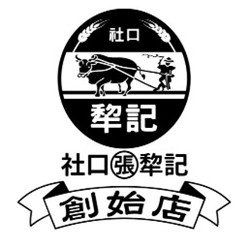 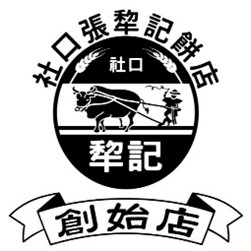 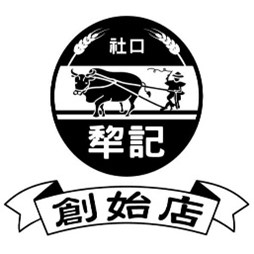 |
|
In its judgment [10], the Intellectual Property and Commercial Court found that the “社口” (Sia-khau), “創始店” (founding store), “張” (Zhang), and the ribbon device found in the disputed marks are either descriptive elements such as the name of a region in Taichung, the nature of the store, the surname of the owner, or simply decorative elements, to which the consumers are less likely to exercise care. On the other hand, the most impressionable element of the disputed marks and the cited marks are all “Leechi”, which is also designated for use on identical or highly similar goods. The disputed marks are thus likely to cause consumer confusion as to the source of the goods, and Article 30, paragraph 1, subparagraph 10 applies to this case.
Furthermore, Sia-khau Leechi argued that since it has been approved to register the mark in 2003, the TIPO has violated the principle of equal treatment by denying the registrations of the disputed marks which also featured “Leechi”. The court decided that since the previous marks were approved around 16 years earlier than the application date of the disputed marks (2019), the examination guidelines, applicable provisions, and general considerations are very different on a case-by-case basis, thus it makes little sense to compare the two. Therefore, the court dismissed Sia-khau Leechi’s appeal.
-
Dispute over Chuanpazi Food Enterprise Co., Ltd.’s (川霸子食品企業有限公司) infringement on the trademark rights of the “川霸子” (chuan pa zi) mark owned by Peng Fu Enterprises Ltd. (澎富企業有限公司).
Case Summary: Chuanpazi Food Enterprise Co., Ltd has been operating its braised snacks and spicy hot pot franchise store under the mark “川霸子” (chuan pa zi). This act infringes on the trademark rights of Peng Fu Enterprises Ltd., the proprietor of the trademark “川霸子”.
In 2010, Peng Fu Enterprises Ltd. (hereafter Peng Fu), a food enterprise based in Penghu, registered the mark , designated for use on goods and services including “condiments, XO sauce, spicy sauce, restaurant, fast food truck” etc. Since 2016, Chuanpazi Food Enterprise Co., Ltd (hereafter Chuanpazi Food) has been operating its braised snacks and spicy hot pot restaurant under the mark “川霸子” and inviting franchise partnership. Peng Fu filed a civil lawsuit against Chuanpazi Food, claiming an infringement on its trademark rights. Chuanpazi Food responded with the defense that it was unaware of the existence of Peng Fu and the mark.
| Defendant’s mark | Plaintiff’s marks |
 |
  |
In its judgment [11], the IP Court found “川霸子” to be an uncommon term. In addition, Peng Fu has marketed its condiments and other goods through multiple channels both domestically and internationally, which has helped the trademark obtain a certain degree of distinctiveness. The defendant’s mark also features the impressionable element “川霸子” with minor differences in the design of the background and the graphics, thus it is not easy for the consumers to distinguish between the two highly-similar marks. Moreover, condiments can also be used as the base of spicy hot pot, which can mislead the consumers into thinking that there is an upstream and downstream business relationship between the two companies’ ingredients or products. Since the two marks are designated for use on similar goods or services, the use of the defendant’s mark constitutes an act of infringement under Article 68, paragraph 1, subparagraph 3 of the Trademark Act. Considering the fact that Chuanpazi Food operates a spicy hot pot business, it is most likely that it has encountered condiments, soup bases, and other products sold by Peng Fu, hence it is unlikely that Chuanpazi Food was unaware of the existence of the plaintiff’s marks. Chuanpazi Food has only started using the mark “chuan pa zi” for its spicy hot pot business since 2016, which was much later than Peng Fu’s registrations of the plaintiff’s marks in 2010, therefore the provision of bona fide prior use according to Article 36, paragraph 1, subparagraph 4 of the Trademark Act does not apply to this case.
-
Dispute over Cona’s Co., Ltd.’s (妮娜有限公司) registration of the mark
 and its dilution of the distinctiveness of the “CORONA” trademark
and its dilution of the distinctiveness of the “CORONA” trademark
Case Summary: The mark ![]() , registered by Cona’s Co., Ltd.’s (hereafter Cona’s), is similar to the “CORONA” trademark, therefore the registration shall be voided.
, registered by Cona’s Co., Ltd.’s (hereafter Cona’s), is similar to the “CORONA” trademark, therefore the registration shall be voided.
Cona’s, an enterprise that operates a chocolate factory sightseeing business in the county of Nantou, has applied for the registration of the mark for use on beverages including “soda, beer, fruit smoothie” etc. Anheuser-Busch InBev SA/NV (hereafter AB InBev) is the owner of the famous beer brand CORONA, and it has registered trademarks including “CORONA Extra” and “CORONA Light” through the Mexican enterprise Grupo Modelo. AB InBev filed an opposition against Cona’s mark, claiming said mark to be similar to its own marks. After reviewing the case, the TIPO voided the registration of said mark. Cona’s filed an administrative appeal, which was dismissed; subsequently the enterprise filed an administrative litigation against the TIPO.
|
Opposed mark |
Opposing marks |
 |
  |
In its judgment [12], the IP Court found that the two marks consist of English letters that are mostly identical, the pronunciations are similar, and both are designed with a Gothic font that produces similar appearances. Since the two marks are also used on identical or similar goods, they should be deemed similar marks. The word “CORONA”, the main distinctive element of the mark, has the meaning of “crown”, which does not have a direct correlation with beer, thus the mark is inherently distinctive. Furthermore, the opposing mark has been used on beer goods since 2013 and imported for sale on Taiwan’s market for many years. It is familiar to relevant consumers, hence it should receive greater protection. The opposed mark is likely to mislead the consumers into believing that there exists a licensing relationship between the two parties, or to cause consumer confusion and misidentification as to the source of the goods. Article 30, paragraph 1, subparagraph 10 applies to this case, and the appeal filed by Cona’s is dismissed.
—
This is a translation of the original article in Chinese, which can be found here.
If you would like to know more about trademark regulations, please feel free to contact Gary Kuo at gkuo@winklerpartners.com.
Written July 12, 2023 by Gary Kuo and Ai-Jing Wu.
Translated August 31, 2023 by Catherine Yen-Lin Chen.
—
[1] Intellectual Property and Commercial Court Judgments Nos. 111-Xing-Shang-Su-32, 52, 53
[2] Supreme Administrative Court Judgments Nos. 111-Shang-216, 321, 357, 464
[3] Supreme Administrative Court Judgments Nos. 111-Shang-600, 776
[4] Intellectual Property and Commercial Court Judgment No. 111-Min-Shang-Shang-14
[5] Intellectual Property and Commercial Court Judgment No. 109-Min-Shang-Su-35
[6] Intellectual Property and Commercial Court Judgments Nos. 109-Xing-Shang-Su-51, 55, 56, 57, 58, 107; Intellectual Property and Commercial Court Judgments Nos. 111-Xing-Shang-Su-21, 22
[7] Intellectual Property and Commercial Court Judgment No. 109-Xing-Shang-Su-55
[8] Supreme Administrative Court Judgment No. 110-Shang-138
[9] Intellectual Property and Commercial Court Judgment No. 110-Xing-Shang-Su-2
[10] Intellectual Property and Commercial Court Judgments Nos. 110-Xing-Shang-Su-59, 66, 67; Intellectual Property and Commercial Court Judgments Nos. 111-Xing-Shang-Su-31, 35
[11] Intellectual Property and Commercial Court Judgment No. 110-Min-Shang-Su-38
[12] Intellectual Property and Commercial Court Judgment No. 110-Xing-Shang-Su-95
Written August 31, 2023 By Gary Kuo.





